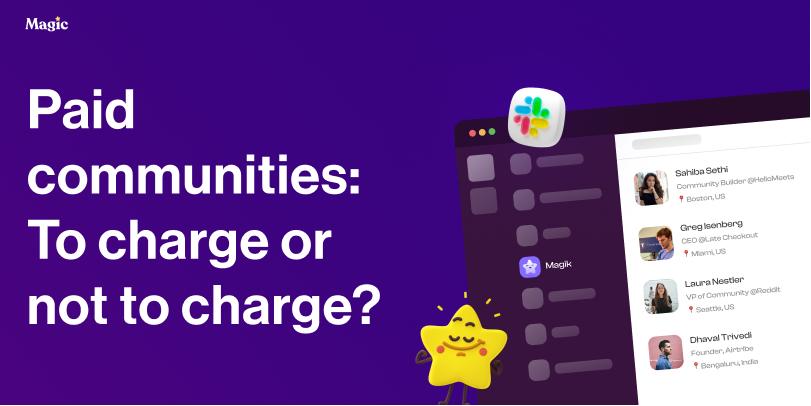Hey, online community folks! Are you stuck trying to figure out how to set up a resource library for your online community? Well, tell your worries to shoo, as this blog post is here to help.
Well, if you’re an online community manager, you’re probably already familiar with the idea of a resource library. It’s basically a collection of valuable materials, such as guides, videos, or ebooks, and members of your community can use that to support and grow it. Sounds great, right?
Why do we need a resource library, though?
A resource library is like a hidden weapon in an online community. Members get immediate access to all the resources and information they require there.
The thing is, a resource library is more than just a repository for materials. It provides a forum for members to interact, learn, and develop. Access to educational resources like e-books, online classes, and tutorials can benefit its users by enhancing their knowledge and abilities.
Folks, that's not all. Sharing resources and expertise among members promotes teamwork and helps create a feeling of community. The library can be a centre for members to interact and share knowledge. Additionally, putting all resources in one spot may help members discover what they need more quickly, saving time and reducing the time it takes to access information.
A resource library is, in a nutshell, a valuable tool for any online community. It offers a plethora of knowledge and skills and strengthens the community by fostering members' personal and professional development.
But, but..
The problem is, how do you create a resource library that’s useful, relevant, and engaging? It’s not an easy task, but it’s certainly achievable. Read on to discover our top tips for getting the most out of your online resource library.
1. Come to an intersection between your and the audience’s choices
First things first- decide on the type of resource library you would like to create.
- Do you want to focus on specific topics such as tech, digital marketing, programming, or design?
- Do you want to provide general content such as webinars, podcasts, or tutorials?
- Will the materials you provide be available to view or download, or do you want to link directly to external sources?
- Or do you want to offer a combination of these?
2. Define your target audience
The most crucial step in setting up a resource library is to clearly define who your target audience is. It’s essential to understand who your members are so you can create content that will be meaningful to them. Consider the following questions:
- What topics are your members interested in?
- What types of resources do they need?
- What formats are most useful?
Your answers to these questions will help you create content that resonates with your community.
3. Build your collection and Implement a Search Tool
Next up is creating the content. If you already have a lot of content available, organising it into groups and topics is just a matter of managing it. Starting from scratch, you may need to research and create materials yourself. Consider adding webinars, podcasts, tutorials, e-books, or any other content that will pique the interest of your community.
Once you’ve identified the resources your community could benefit from, it’s time to make them easier to find. Implementing a search tool in your resource library is essential for helping your members quickly find what they need. Make sure your search tool is easy to use and intuitive to navigate.
4. Make Resources Easy to Access
Once you’ve gone through the effort of creating a resource library for your online community, you don’t want to make it hard for members to access it. Make sure you make resources easy to access by providing direct links to them from your website or via email. Additionally, consider creating a dedicated page on your website containing all your resources and directing members.
5. Provide Resources in Different Formats
If your members prefer to learn through different media like videos or audio, provide resources in those formats. You want to ensure your members can access your material in whatever way is best for them.
6. Monitor Resource Usage
Once your online resource library is up and running, monitor its use. This will help you determine which resources are popular and aren’t and how to adjust accordingly. Creating a resource library for your online community can be an enriching experience. It’s a great way to foster engagement and collaboration and inspire others to explore and learn.
Here are some samples of how resource libraries may look like-
- For a gaming community

- For a design community

- For a lifestyle community

How to make resource libraries accessible to community members?
Making a resource library accessible to your community members can be a piece of cake with a little bit of creativity and effort! Here's how:
Organise with pizzazz: Arrange resources in categories that are easy on the eyes and make sense for your community. A well-organized library is like a roadmap to success.
Search bar sorcery: A search bar can be a real lifesaver for those in a hurry. It's like having a magic wand to find what they're looking for quickly!
Label with flair: Give each resource a catchy, descriptive label that tells members what they can expect. Think of it as adding a little fairy dust to your library.
Make it visually appealing: Use images, graphics, and a visually appealing layout to make the library eye-catching and inviting. A little bit of sparkle goes a long way!



